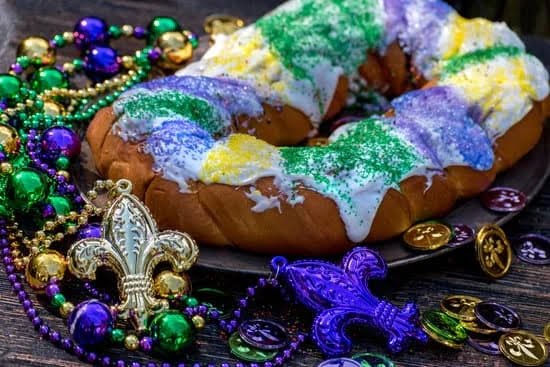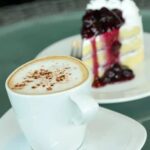Welcome to the world where baking meets artistry – the realm of art cake decorations. In this captivating article, we delve into the fusion of art and baking, unraveling the exquisite craft that transforms cakes into edible masterpieces. From understanding how cake decoration has evolved into a medium of artistic expression to discovering various types of art cake decorations, prepare to be inspired by the creativity that flourishes on these edible canvases.
Cake decoration has come a long way from simple frosting and sprinkles. Today, it has become a thriving art form where bakers unleash their imagination, creating visual feasts that leave everyone in awe. With every stroke of frosting or delicate fondant sculpture, artists transform cakes into breathtaking works of art. In this article, we will explore how these stunning creations have revolutionized not just the baking industry but also the art world.
Throughout history, cake decoration has evolved from its humble beginnings to intricate and elaborate designs. Tracing its origins allows us to appreciate the skill and craftsmanship that today’s cake decorators possess. From ancient civilizations’ efforts to embellish their sweet treats with natural dyes to modern-day technological advancements in edible printing, we will embark on a journey through time as we uncover the rich historical evolution of art cake decorations.
So get ready to be whisked away into a world where art is baked, sculpted, and painted onto delectable canvases. Join us as we explore different techniques used by cake artists around the globe, dive into the captivating stories behind famous cake decorators who have redefined the industry, and learn steps and tips on how you can create your own show-stopping cake decorations. Get ready for an inspiring adventure through the delights of art cake decorations.
Historical Evolution
The Origins of Cake Decoration
Cake decoration as an art form has a fascinating and rich history that spans centuries. Tracing its origins can give us a glimpse into the evolution of this creative practice. Early cake decorations were simple and limited to basic frostings, but as baking techniques advanced and people’s appreciation for aesthetics grew, cake decoration transformed into a captivating medium of artistic expression.
The earliest recorded evidence of cake decoration dates back to ancient Egypt, where the Egyptians would adorn their breads with ornate designs and patterns before baking them. However, it wasn’t until the 17th century in Europe that the foundation for modern cake decoration was laid. During this time, sugar became more readily available and affordable, leading to the development of intricate sugar art techniques.
The Evolution into Elaborate Designs
As the art of cake decoration continued to evolve, new techniques and styles emerged. In the 19th century, royal icing, made from egg whites and powdered sugar, became popular for creating elaborate designs on cakes. This allowed for intricate piping work and delicate filigree patterns that adorned celebratory cakes.
In the early 20th century, fondant emerged as another significant milestone in the evolution of cake decoration. Made from sugar paste rolled out into a thin sheet, fondant could be draped over cakes and sculpted into three-dimensional shapes. This introduced a whole new dimension to cake decorating possibilities.
With time, advancements in technology and ingredients further expanded the repertoire of cake decorators. The advent of food coloring made it possible to achieve vibrant hues on cakes, while improvements in tools and equipment enabled more precise detailing and complex designs.
Today, we can see how far cake decoration has come from its humble beginnings. From simple frosting techniques to intricate fondant sculptures or painted masterpieces on edible canvases – the possibilities are endless when it comes to transforming a plain cake into an edible work of art.
Types of Art Cake Decorations
Fondant Sculptures: Creating three-dimensional masterpieces on cakes
One of the most captivating forms of art cake decoration is the creation of fondant sculptures. Fondant, a pliable icing made from sugar, water, and gelatin, allows cake artists to transform cakes into three-dimensional masterpieces. From delicate flowers to lifelike characters, fondant sculptures add a touch of whimsy and elegance to any cake.
Creating fondant sculptures requires both artistic skill and a steady hand. Cake decorators meticulously shape and mold the fondant into desired forms, often using specialized tools like sculpting knives and shaping molds. The result is a breathtaking centerpiece that can truly be considered edible art.
Piped Buttercream Designs: The art of using buttercream frosting to create intricate patterns
Another popular technique in art cake decoration is the use of piped buttercream designs. Buttercream frosting, a creamy mixture of butter, powdered sugar, and flavorings, becomes the artist’s medium as they wield piping bags fitted with various tips to create elaborate patterns on cakes.
The possibilities are endless when it comes to piped buttercream designs. From intricate lacework to delicate floral motifs, cake artists can bring their imagination to life on an edible canvas. Every stroke and swirl of buttercream adds depth and texture to the design, making each creation unique.
Edible Paintings: Blending colors and brushstrokes to transform cakes into art pieces
For those who want to truly explore the intersection of art and baking, edible paintings offer an exciting avenue for creativity. With food-safe paints made from edible ingredients like cocoa butter or food coloring mixed with alcohol or extracts, cake decorators can brush vibrant colors onto their cakes just like a painter would on a canvas.
Edible paintings allow cake artists to recreate famous artworks or express their own vision through brushstrokes. Techniques such as layering colors and blending shades help bring depth and dimensionality to the design. The end result is a masterpiece that is not only visually captivating but also delicious to eat.
| Types of Art Cake Decorations | Description |
|---|---|
| Fondant sculpting | Creating three-dimensional masterpieces using pliable fondant icing |
| Piped buttercream designs | The art of using buttercream frosting to create intricate patterns on cakes |
| Edible paintings | Blending colors and brushstrokes to transform cakes into art pieces |
Top Artists in the World of Art Cake Decorations
Renowned cake artists have revolutionized the art of cake decoration, pushing boundaries and introducing innovative techniques that have captivated the world. These top artists have not only mastered the technical aspects of cake decorating but also developed their own unique styles that set them apart from others in the industry.
One such artist is Ron Ben-Israel, whose name has become synonymous with luxury and elegance in the world of cake decorations. With a background in fine arts and ballet, Ben-Israel creates amazing confections that are truly works of art. Known for his attention to detail and impeccable sugar craftsmanship, his cakes often feature intricate lace patterns and delicate sugar flowers.
Another prominent figure in the art cake decoration industry is Michelle Sohan from Trinidad and Tobago. Sohan combines her passion for baking with her love for her Caribbean heritage to create stunning creations that reflect the vibrant culture of her homeland. Her cakes are known for their bold colors, intricate hand-painted designs, and fusion of flavors inspired by tropical fruits and spices.
Alessandra Frisoni, an Italian artist based in London, shatters stereotypes with her unconventional approach to cake decoration. Her designs often challenge traditional notions of what a cake should look like, incorporating unusual materials such as metal elements or even live plants. Frisoni’s creations blur the line between food and art, leaving audiences in awe of her creativity.
These artists and many others continue to push the boundaries of what is possible in cake decoration, inspiring aspiring decorators around the world to dream big and unleash their own artistic potential. The artistry and skill displayed by these top artists serve as a testament to the limitless possibilities that can be achieved when combining baking with a creative mindset.
| Artist | Country | Style |
|---|---|---|
| Ron Ben-Israel | United States | Elegant and intricate |
| Michelle Sohan | Trinidad and Tobago | Vibrant and hand-painted |
| Alessandra Frisoni | Italy/London | Unconventional and innovative |
The Role of Inspiration
Artists, regardless of their medium, often find inspiration from various sources. For cake decorators, drawing inspiration from other art forms allows them to create unique and breathtaking designs that transcend the boundaries of traditional cake decorations. This section will delve into the role of inspiration in art cake decorations and explore how artists draw ideas from paintings, sculptures, and other mediums.
Finding Inspiration in Paintings
Paintings have long been a source of artistic inspiration, and cake decorators are no exception. From the vibrant colors of Impressionist paintings to the surreal imagery of Salvador Dali, artists can transform a cake into a edible masterpiece that pays homage to famous artworks. By studying brushstrokes and color palettes, cake decorators can recreate the essence of a painting on their creations, bringing visual delight to both art lovers and dessert enthusiasts.
Translating Sculptures into Edible Forms
Sculptures provide another avenue for inspiration in the world of art cake decorations. Cake decorators can take cues from famous sculptors like Michelangelo or Rodin by recreating their iconic works using fondant or modeling chocolate. The challenge lies in replicating the textures and intricate details inherent in sculptures such as marble veining or delicate facial features. Through careful craftsmanship and attention to detail, artists can create awe-inspiring edible sculptures that blur the line between art and confectionery.
Exploring Other Artistic Mediums
Beyond paintings and sculptures, cake decorators find inspiration in a multitude of other artistic mediums. Photography, fashion design, architecture – all these creative fields offer endless possibilities for innovative cake designs. A stunning wedding gown may inspire a cake decorator to craft delicate sugar flowers resembling fabric folds.
Architectural landmarks might influence the creation of structural cake designs that emulate famous buildings or bridges. By expanding their horizons beyond traditional mediums typically associated with baking, artists can push the boundaries of what cake decorations can be.
Mastering the Techniques
Creating stunning art cake decorations requires mastering various techniques that elevate a simple cake into a masterpiece. Whether you’re a beginner or an experienced cake decorator, honing your skills is essential to achieving professional-looking results. Here are some steps to help you on your journey to becoming a master of art cake decorations:
- Prepare the cake canvas: Start by baking and cooling your cake. Level the top of the cake to ensure an even surface for decorating.
- Crumb coat: Apply a thin layer of buttercream frosting, known as a crumb coat, to seal in any crumbs and provide an ideal base for the final layer of frosting.
- Frost the cake: Use an offset spatula or piping bag to apply a smooth layer of buttercream frosting onto the crumb-coated cake. Use long, sweeping motions for an even finish.
- Choose your design: Decide on the style and design you want for your art cake decoration. This could be anything from floral patterns to intricate sculptures or even replicating famous artworks.
- Select your tools: Depending on your chosen design, gather the necessary tools such as fondant cutters, piping tips, brushes, and food coloring.
- Fondant sculpting: If working with fondant, roll it out onto a clean work surface and use various molders or sculpting tools to shape it into three-dimensional figures or designs.
- Piped buttercream designs: For intricate patterns and details using buttercream frosting, fill a piping bag with your desired color and nozzle tip. Practice piping techniques before applying them to your final artwork.
- Create edible paintings: Utilize edible food coloring and brushes to paint directly onto the cake. Use different brush strokes and layer colors to achieve depth and dimension.
- Add finishing touches: Enhance your art cake decoration with additional elements such as gold or silver accents, edible glitter, or sugar flowers for a touch of elegance.
Remember, mastering these techniques takes time and practice. Don’t be discouraged if your first few attempts don’t turn out perfectly. Embrace the learning process and keep refining your skills. With patience and dedication, you’ll soon be creating art cake masterpieces that will leave everyone in awe.
Challenges and Rewards
Creating art cake decorations is a process that involves a unique set of challenges and offers rewarding experiences. Behind the scenes of these stunning creations, cake decorators face various complexities and intricacies that require skill, creativity, and patience. However, the satisfaction that comes from successfully completing an art cake project makes all the challenges worthwhile.
One of the primary challenges in art cake decorations is achieving precision and attention to detail. Cake decorators must have steady hands and fine motor skills to create intricate patterns, sculptures, or paintings on cakes. It requires a high level of concentration and patience to ensure every element is perfectly placed and executed.
Another challenge in art cake decorations is working with different materials and mediums. Whether it’s fondant, buttercream frosting, edible paints, or other edible elements, each material requires specific techniques for shaping, coloring, or applying to the cake surface. Cake decorators must constantly hone their skills and stay up-to-date with new techniques to bring their creative visions to life.
Despite these challenges, the rewards of art cake decorations are abundant. Firstly, there is the joy of seeing a vision come to fruition – transforming a plain cake into a work of art that both visually pleases and tantalizes taste buds. The sense of accomplishment from creating something beautiful and delicious is unmatched.
Moreover, art cake decorations often serve as memorable centerpieces at various events. From weddings to birthdays to corporate parties, these visually stunning cakes become conversation starters and enhance the overall ambiance of any celebration. The pride that comes from receiving compliments on one’s creations further adds to the rewards of this craft.
Art Cake Decorations as a Business Venture
Cake decorating has evolved from a hobby to a flourishing business opportunity, allowing talented individuals to turn their passion for art cake decorations into a profitable venture. Many artists and creative bakers have successfully carved out a niche in the industry, offering their unique and visually stunning cakes to clients who value creativity and craftsmanship.
In this section, we will explore the potential of art cake decorations as a career or side hustle, as well as provide insightful advice on starting a cake decorating business and marketing your creations.
One of the key advantages of pursuing art cake decorations as a business is the ability to showcase your artistic talents while fulfilling people’s desires for delicious and aesthetically pleasing cakes. Being able to create edible masterpieces that not only taste amazing but also look visually stunning can set you apart from traditional bakers. The demand for custom-made cakes for weddings, birthdays, and other special occasions continues to grow, presenting ample opportunities to tap into this market.
When starting a cake decorating business, it is important to define your niche and develop a signature style that differentiates you from competitors. Whether it’s creating realistic fondant sculptures or hand-painting intricate designs on cakes, having a unique selling point will attract customers who are seeking something special and extraordinary. Additionally, building an online presence through social media platforms or creating a website can help showcase your portfolio and attract potential clients.
Marketing plays a crucial role in establishing yourself in the art cake decoration industry. Utilize various channels such as word-of-mouth referrals, collaborations with event planners or wedding venues, participating in local fairs or bake sales, and creating eye-catching advertisements on social media platforms. Building relationships with clients by providing exceptional customer service will also foster repeat business and positive reviews.
While turning your passion into profit can be rewarding both creatively and financially, it’s important to remember that running a cake decorating business requires hard work, dedication, and continuous learning. Keeping up with industry trends, attending workshops or classes to hone your skills, and staying up to date with new techniques and tools will help you stay competitive in this ever-evolving field. Starting small and gradually expanding your business based on demand can also be a prudent approach.
Conclusion
In conclusion, art cake decorations have emerged as a remarkable fusion of baking and artistic expression. The historical evolution of cake decoration highlights how it has evolved from simple frosting to intricate and elaborate designs. Today, we have a variety of techniques at our disposal, such as fondant sculptures, piped buttercream designs, and edible paintings, allowing us to unleash our creativity on edible canvases.
The world of art cake decorations is filled with talented artists who have revolutionized the industry. These experts showcase innovative techniques and unique styles that continually push the boundaries of what can be achieved with cake decorating. Drawing inspiration from various art forms like paintings and sculptures, these artists create exemplary cake designs that pay homage to famous artworks and artists.
Aspiring cake decorators can master the techniques of art cake decorations by following step-by-step guides provided by expert decorators. With perseverance and practice, one can achieve show-stopping cake decorations that will leave everyone in awe. Although the process of creating art cakes can be complex and intricate, the joy and satisfaction that comes from successfully completing a project make it all worthwhile.
Art cake decorations offer not only creative fulfillment but also the potential for turning passion into profit. Many individuals have turned their love for creating beautiful cakes into successful business ventures or lucrative side hustles. With insightful advice on starting a cake decorating business and marketing your creations, there are endless possibilities for those willing to explore this career path.
Frequently Asked Questions
Frosting, Icing & Edible Decorations
Frosting, Icing & Edible Decorations: Frosting and icing are two deliciously sweet toppings used to enhance the flavor and appearance of cakes. Frosting is often thicker and creamier, while icing tends to be thinner and glossier. Both come in a variety of flavors and can be spread or piped onto the cake in various designs.
Additionally, edible decorations such as sprinkles, chocolate shavings, fresh fruits, or even edible flowers can be used to add an extra touch of beauty and taste to the finished cake. These elements allow bakers to unleash their creativity and make each cake unique.
Cake Toppers
Cake Toppers: Cake toppers are decorative elements placed on top of a cake that serve as the centerpiece or focal point. They can be made from various materials like plastic, fondant, sugar paste, or even metal. Traditionally, cake toppers featured bride-groom figurines for weddings or themed characters for birthday cakes.
However, the options are now limitless when it comes to cake toppers. People embrace personalized toppers that reflect individual interests or milestones, such as initials made with wirework or miniatures of hobbies like sports equipment or musical instruments. Customization allows cake decorators to create breathtaking designs that truly capture the essence of special occasions.
What is the cake trend for 2023?
While it is challenging to accurately predict specific trends years in advance due to ever-evolving tastes and preferences, one potential cake trend for 2023 revolves around sustainability and eco-consciousness. As people become more aware of the environmental impact associated with food production and packaging waste, there may be a shift towards eco-friendly cake designs using sustainable ingredients and recyclable materials for decorations.
Bakers might incorporate natural elements like pressed flowers instead of artificial ones or experiment with vegan frosting options using plant-based ingredients without compromising flavor. This emerging trend could redefine how cakes are created moving forward by giving equal importance to taste, aesthetics, and mindful choices that benefit both people and the planet.

Welcome to our cake decorating blog! My name is Destiny Flores, and I am the proud owner of a cake decorating business named Cake Karma. Our mission is to provide delicious, beautiful cakes for all occasions. We specialize in creating custom cakes that are tailored specifically to each customer’s individual needs and tastes.





